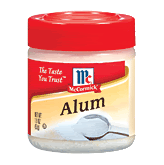Hi all,
I have read in several places that the metric system is very definitely inferior from the point of view of the amount of bearing face on the thread, as well as a load of technical stuff that I did not understand very well so will not try to define.
It would seem that the metric system was devised for planetary measurement (maps) and did not take into account engineering principles (being as they were in their infancy in the early 18th century.
A certain little Corsican corporal decreed that metric would be the way of his world and so it was.
Being as most of Europe was dominated by this person, most of Europe followed his decrees. This was mainly to standardise lengths of measurement for transporting troops...the Swedish mile is about 10 English miles (yes, I know, he didn't get to Sweden, but it shows the principle) :

Another little corporal, this time from Austria, also dominated most of Europe for a time, and he too was interested in moving large numbers of troops, so was keen to keep the system of measurement. :

Those who applied the science of measurement to engineering kept to the imperial measurements, and did not happen to get invaded at the beginning of (19thC), and rebirth of (early and middle 20thC) the industrial revolutions that were fed by the neccessities of war.
People have always developed a thread pattern for particular uses, check your Machinery's Handbook for the Loewenherz Thread which uses a 53 degree 8 minutes angle, used for measuring instruments in Germany. It is otherwise based on the metric system which, in its standard form, obviously didn't perform to requirements.
The point here is that, in my opinion, no one system is superior to any other, but you use which you want for the purpose that you are putting it to. :big:
I am not a scientist by any stretch of the imagination but I am interested in figuring out why certain systems use certain configurations.
If anyone can tell me why Whitworth uses a 55 degree angle and BSF and Unified (and metric) use 60 degrees I would be very grateful. It would appear on the face of it that it is just more meat on the thread but it may well be more than that. ???
Another thing, and I can't find it anywhere because it must too universally known...what do you mean when you say 6-32 etc? I realise that 32 is the TPI but what does the first number relate to please? I am building an engine to American plans using BA threads. The first number is about the same as the BA size but not the thread rate... ??? I can see that the measurement is a decimal fraction of an inch but is the number just a standard or is there a reason? Also, what happened to 7, 9 and 11 ??? ??? ???
The only reason that I don't mix thread systems on a build is the pain of trying to find the right spanners when putting it together or taking it apart.

Andy





















































![DreamPlan Home Design and Landscaping Software Free for Windows [PC Download]](https://m.media-amazon.com/images/I/51kvZH2dVLL._SL500_.jpg)








